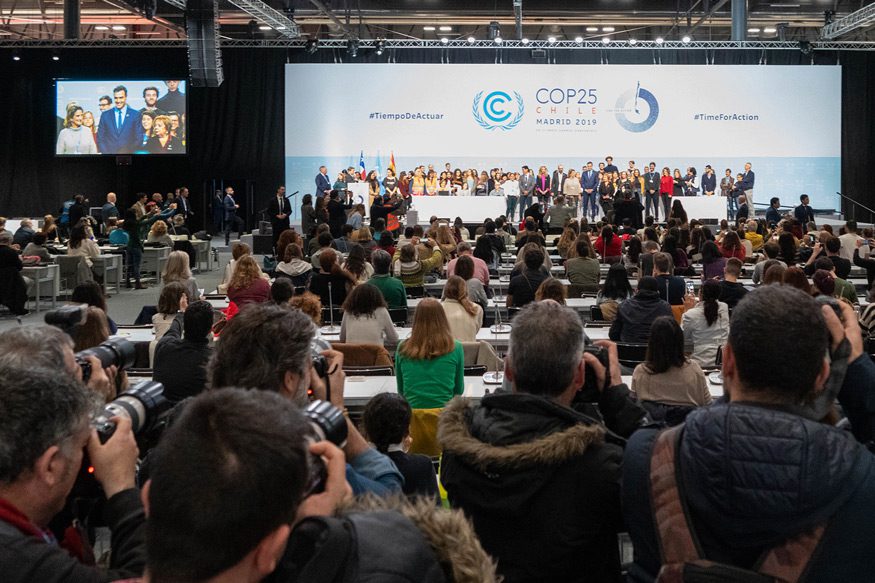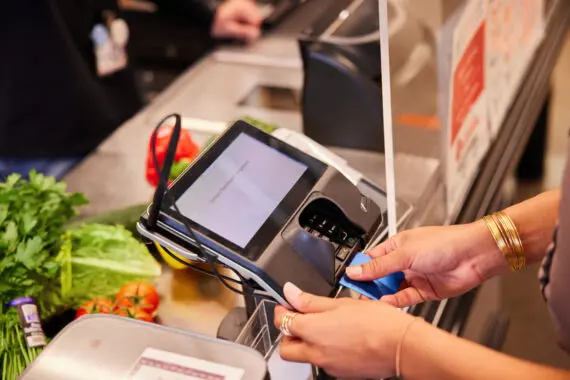By Karyn Bigelow
COP25, the 25th annual U.N. climate change conference, took place in Madrid, Spain, under the presidency of the government of Chile. The 25th COP conference was the longest ever, stretching from December 2 to December 13. (People who wonder why this event is called COP are not alone in asking. The connection between COP and climate change is that COP stands for Conference of the Parties to the U.N. climate convention. Chile is the 2019 president of the group of countries that signed on to the climate convention).
COP25 was a missed opportunity. Climate scientists warn that the planet cannot afford another such delay. Policies must be in place by the end of this year, 2020, to cut carbon emissions in half by 2030 and end them altogether by 2050. This is the pace of carbon reduction necessary to limit global warming to 1.5 degrees Celsius between now and 2100. As the Climate Reality Project explains, this is the maximum increase if the planet is to avoid many natural systems crossing “dangerous points of no return … Think of 1.5 degrees not as an absolute line in the sand, but as a general indicator of where many climate impacts – on balance – go from destructive to catastrophic.”
COP25’s nearly 200 participating countries did agree to a statement calling on them to do more to fight climate change. Specifically, they should make more ambitious national commitments under the landmark Paris Climate Agreement of 2015. New national commitments are due next year.
One major area where negotiations have so far failed is in establishing rules for international carbon markets. Continuing efforts to reach agreement sent both COP25 and COP24, held in Poland, into overtime. A workable international carbon market system could make a significant contribution to slowing climate change. It would allow countries to “offset” or compensate for their greenhouse gas emissions by paying for reductions in emissions wherever this would make the greatest impact, rather than only inside their own borders.
Successful international carbon markets could mitigate the impacts of climate change in some of the worst-affected areas—meaning more help for communities that are geographically most vulnerable to the impacts of climate change and have the fewest resources to cope with the damage. This description may sound familiar, because these communities are largely the same as those whose people are more likely to be hungry.
A second controversial issue was compensation for loss and damage. In fact, Helen Mountford, vice president of climate and economics at the U.S.-based World Resources Institute, characterized these discussions as “acrimonious negotiations.” The Institute, along with many others, is acutely aware of the irony that the people suffering most from climate change did the least to cause it. The Paris Agreement includes one response to these inequities—an international financing mechanism to help compensate low-income countries for climate-linked disasters. At COP25, however, some developed countries sought to weaken some of the language in the provisions for compensation. “Developed countries failed to provide sufficient assurance that they would mobilize adequate and predictable finance for vulnerable countries to respond to climate impacts,” said Mountford.
On a brighter note, there have been steps forward that, although not on a comprehensive global level and not reflected in COP25’s closing statement, could lay the groundwork for faster global action. The European Union (EU), the world’s largest economic bloc, announced a new commitment at COP25: the European Green Deal would eliminate the EU’s impact on the global climate by 2050. A coalition of US governors and mayors that, combined, represents about half the U.S. population, affirmed its continued commitment to reaching the Paris Agreement goals, and a total of 80 countries have now committed to more ambitious climate targets.
Another bright spot at COP25, this one outside the main negotiations, was the work of civil society organizations to draw attention to the connections between climate change and food security. Several organizations held events focused on the intersection of climate change with food security and agriculture. Participants recognized the need, in the face of climate change, to make changes in how food is produced without sacrificing, in the process, the 2030 goals of ending hunger and malnutrition and reducing poverty. Regions where climate change is already compromising food production are of particular concern.
There are still opportunities this year to reach global agreement on concrete steps. U.N. climate negotiations will continue in June 2020 in Bonn, Germany, and at COP26 in Glasgow, Scotland, in November 2020. It is more important than ever for people everywhere to urge their governments to adopt climate policies that are bold enough to achieve the critical goal: limiting the planet’s temperature increase to 1.5 degrees Celsius.
Karyn Bigelow is research associate with Bread for the World Institute.



